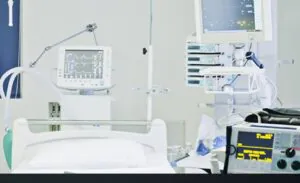The increase in environmental concerns and growing awareness about the use of eco-friendly products is expected to drive the growth of the global sustainable packaging materials market. The other factors include strict governmental policies for the safety of the environment coupled with the availability of incentives and regulatory support from the government. Moreover, the demand for sustainable packaging of food products from the food and beverage industry is projected to be a key growth driver for this sector. As the demand for sustainable packaging gradually increases, packaging designers and manufacturers of sustainable packaging are on the lookout for new technological innovations to boost their sustainable packaging designs. The innovative packaging materials include:
- Aqueous barrier coatings
- Micro-fibrillated cellulose
- Molded fiber printing technology
- Micro-patterned packaging materials
Though such factors and innovations primarily propel the growth of the global sustainable packaging market, other aspects such as the lack of stringent scenarios in emerging economies are hindering its growth. However, the increasing scope of applications of sustainable packaging is likely to work in the favor of the market in the near future.
The Business Challenge
The client- A prominent sustainable packaging materials supplier
Objective- To identify, the relevant risks in the sustainable packaging sector and implement strategies to overcome them.
The client, a leading sustainable packaging materials supplier to various industrial segments such as healthcare, food and beverage, and other industries, wanted to leverage the use of Infiniti’s industry risk assessment solution to better understand the risks in the marketplace. The client was looking at developing new packaging solutions to overcome the potential risks that existed in the market. The client also wanted a detailed report on the entry barriers, new opportunities, risks, and competition in the sustainable packaging market space.
Results- Assisted the client in the identification and evaluation of major industry risks. Also, adopted and implemented appropriate risk mitigation strategies and developed new packaging solutions.

Want more information about our risk assessment solutions?
The Journey
The risk assessment experts at Infiniti carried out extensive research, comprising of interviews and discussions with leading stakeholders in the market space to help the client improve business efficiency. The experts at Infiniti further compiled information from a wide array of secondary sources such as paid industry databases, company presentations, and industry forums to help the client understand the competitive scenario.
The Solution and the Business Impact
Implementing an industry risk assessment engagement helped the client to identify potential risks and devise effective methods to overcome them. It also helped them to gain a better idea of the global sustainable packaging market landscape. The solution offered assisted them in predicting consumer behavior patterns for various sustainable packaging materials. Moreover, our risk assessment solution also enabled them to analyze and evaluate risks associated with the identified hazards.
The Future
The packaging landscape is evolving rapidly owing to the growing popularity of sustainable packaging materials. The use of traditional packaging materials made from fossil fuels may provide the required protection but creates environmental problems when it’s time for disposal. This is the main reason for the high demand for sustainable packaging materials. But at the same time, technological advances in digitization, IoT, and sensors are making packaging more complicated so that the products can be better tracked and monitored. However, one of the great things about the future of packaging materials is that many creative approaches are being developed to solve our current problem of waste management.
Sustainable packaging trends
- Demand for recyclable materials: There is an increase in the demand for the use of recyclable materials such as cardboard, paper, and other such materials to ensure that the packaging creates the least impact to the environment.
- The emergence of edible packaging: Adopting the use of edible packaging helps eliminate the packaging waste. Though this is a relatively new concept, several companies have already started focusing on developing such packaging materials to minimize plastic and paper wastes.
- The huge scope for lightweight packaging materials: The use of lightweight packaging is gaining momentum across end-user segments owing to its various benefits. It helps in reducing manufacturing costs and also decreases wastage by utilizing less material to manufacture the packages.
Though risk identification and assessment is a proactive process, it is more cost-effective to implement a robust risk management system earlier rather than creating a retrospective risk management system after the occurrence of an event. For players trying to gain a stronger foothold in the material market space, it is best recommended to consider implementing an industry risk assessment engagement to gain detailed insights into potential threats. Therefore, organizations that carefully anticipate and access industry risks and challenges to address them proactively will emerge as the winner in this complicated marketplace.



